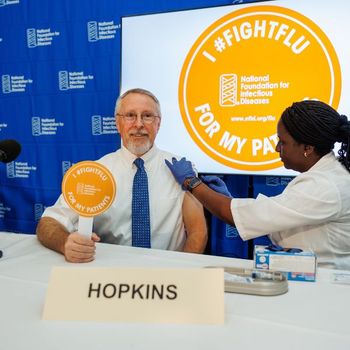
Lower-Risk Malaria Regions are Breeding Grounds for Drug-Resistant Strains
New drug-resistant strains of the parasite that causes malaria tend to evolve in regions with a lower risk of malaria. This is because in hard-hit areas with high transmission rates, like sub-Saharan Africa, they get outcompeted by the more common, drug-sensitive strains inside the human host. In such high-transmission settings, it takes a long time for drug-resistant strains to take hold, but once they do, they can spread very rapidly, according to a new study publishing on August 21 in the open access journal PLOS Biology, by Mary Bushman of Emory University and her colleagues.
Since the 1950s, the malaria parasite, Plasmodium falciparum, has repeatedly become resistant to new antimalarial drugs, making it difficult to control the spread of the disease and creating the threat of a future public health crisis. In the new study, Bushman and colleagues used mathematical modeling to investigate the historical observation that resistant strains of the parasite evolve first in regions with lower infection rates, like Southeast Asia and South America.
"We virtually never observe the early stages of drug resistance evolution, but the early stages are crucial - by the time resistance is identified, it's often too late to control it effectively," says Bushman. "Mathematical modeling can be incredibly helpful to understand what's going on beneath the surface and identify drivers of resistance evolution that we can target to try and disrupt the process."
The researchers used a model that simulates the infection and transmission dynamics of drug-sensitive and resistant strains in a population of humans and mosquitoes. The model indicated that emerging drug-resistant strains are more likely to go extinct within a host in regions with high malaria transmission rates. But once the new strains finally become established, they spread more rapidly in areas that are heavily burdened with the parasite, than in countries with lower transmission rates.
The study's findings offer a novel explanation for the observed global patterns of drug resistance in malaria. A better understanding of the relationship between transmission rates and the rise of drug-resistant strains could help public health workers to tailor malaria response for local conditions and lead to improved strategies for slowing future drug resistance.
"The more we understand about the evolution of drug resistance in malaria, the better equipped we are to stop it," says Bushman. "If within-host competition inhibits the spread of resistant parasites, then we can try to leverage that as a tool to stop resistance from spreading."
Reference: Bushman M, Antia R, Udhayakumar V, de Roode JC (2018) Within-host competition can delay evolution of drug resistance in malaria. PLoS Biol 16(8): e2005712. https://doi.org/10.1371/journal.pbio.2005712
Source: PLOS
Newsletter
Stay prepared and protected with Infection Control Today's newsletter, delivering essential updates, best practices, and expert insights for infection preventionists.






